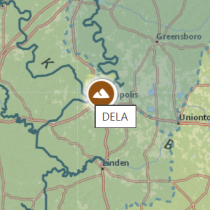Joint European-U.S. Observatory Planning Continues at NEON
October 2, 2013
The second annual COOPEUS (COOPeration EU and U.S.) strategic planning meeting was held at NEON last week in order to continue the development of joint harmonization and interoperability between partner observatories in the U.S. and Europe. Interoperability activities include linking joint science questions to requirements, traceability of measurements to known standards or best community practices, and developing algorithmic procedures, data formats, joint data portals and user communities.
Meeting attendees included representatives from the European Union (FP7) and the National Science Foundation, designated leaders from the respective observatories, and other partner organizations including Future Earth, Earth Cube, NOAA, Data One, ICSU, and GEOSS.
In addition to collaborative discussion, each observatory provided a detailed update of its progress and planned activities for the next calendar year. Invited speakers Dr. Berit Johne (EU European Research Area-Joint Programming Initiative for Oceans, and The Research Council of Norway) and Dr. Dennis Ojima (Nobel Laureate) gave keynote talks at the University Corporation for Atmospheric Research. Attendees also toured UNAVCO and NEON facilities, including the Central Plains Experimental Research (CPER) site.
COOPEUS is funded jointly between the European Union (FP7) and the National Science Foundation. Its overarching goal is to make informatics interoperable among several large-scale environmental science observatories in both the EU and U.S. These large-scale environmental observatories are based around geodesy (IRIS, PBO, and EPOS), space weather (AMISR and EISCAT), deep oceans (OOI and EMSO), carbon (NEON and ICOS), and biodiversity (NEON and Lifewatch). This effort also engages many other partners, such as DataOne, EarthCube, GEOSS, GCOS GEO-BON, NOAA, Fluxnet and others.
The first COOPEUS strategic planning meeting was held in Bremen, Germany, in September 2012.

